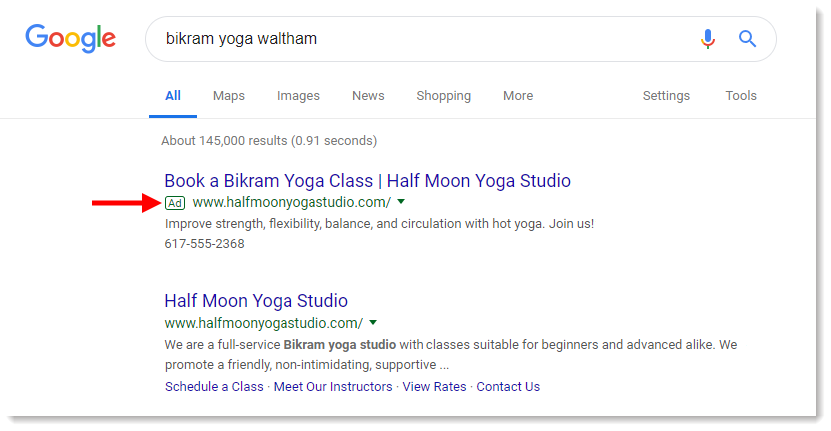Building an ad campaign on Google is a great way to increase visibility for your business, and drive traffic to your website or promote a limited-time offer. To get the most from your campaign, it's important that your ad is optimized to achieve the greatest impact in Google search results:
| Example of a Google Ad at the top of Google search results |
 |
To better target your ideal customer segments, you can create multiple ads that are focused on smaller audiences. This allows you to use messaging and keywords that are more meaningful and more likely to convert. For example, a yoga studio could run one generic ad promoting yoga classes, or they can break their ads into three more targeted groups and promote three types of yoga classes: Bikram yoga as their newest offering, prenatal yoga for expectant mothers, and chair yoga for seniors with mobility issues. It's all yoga, but the audience and keywords are very different!
| Be a better marketer: Outsmart your competition with our Google Ads primer for small businesses! |
For more information on creating your ad and targeting an audience, please see Google's best practices for ads.
Any links we provide from non-Constant Contact sites or information about non-Constant Contact products or services are provided as a courtesy and should not be construed as an endorsement by Constant Contact.
Copyright © 2025 · All Rights Reserved · Constant Contact · Privacy Center